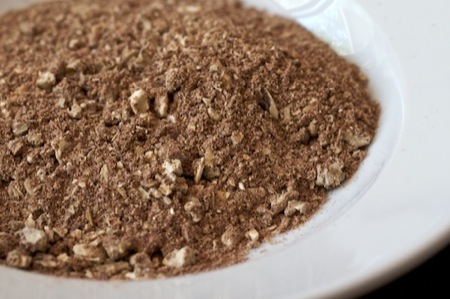Feeding & Plant Health
Feeding
When it comes to feeding clematis, organic material is best: Clematis will benefit greatly from an annual mulch of manure/compost during the autumn and spring because it keeps the soil warm in the autumn to prolong root growth and used in the spring will hold in moisture preventing your plant drying out and of course provides excellent nutrient for the plant over a long period of time.
Bagged manure is fine but fresh manure should be left to rot and cool before use and don’t put it too close to the stems of the plant. Additionally apply a good single handful of bonemeal when pruning has been carried out by working it into the soil around the base of the plant and watering in.
If your clematis are planted at the back of a bed or border (difficult to get to), then during February, place a small handful of Westland Gro-Sure Slow Release Plant Food around the base of the plant and gently wriggle it into the soil enough to cover it up. Then from April to the end of September we recommend sprinkling on a small handful of Westland Sulphate of Potash about once every 3-4 weeks. These fertilisers will improve the colour, size and quantity of your clematis blooms.
Alternatively from May use liquid feed like Westland Gro-Sure Soluble Plant Food or Tomato Maxicrop once a fortnight until mid September.
Feeding Winter and Evergreen Clematis
For evergreen clematis it would be advisable to apply a good single handful of bonemeal in about March/April to help them develop new root before they go into their dormant period in the summer. Once they begin to come out of that dormancy in about early October, give a single handful of Westland Sulphate of Potash sprinkled into the soil at the base of the stems to help improve their flowering.
To correct yellowing of the leaf you may use Westland Epsom Salts which is a good general tonic for plants but is particularly good for magnesium deficiency which clematis can be susceptible to.
Plant Health
In the nursery we use natural predators for biological control of common pests to reduce the use of chemicals on our nursery. If you notice a few ‘bugs’ on your plants, they may be friends, not foes!
Trying to keep a website up to date with all pesticide regulations is very hard so we advise you visit rhs.org.uk for the most up to date advice on which products to use on your clematis. Below is their advice on slugs and clematis wilt
How to control slug & snail damage on clematis?.jpg)
The damage inflicted on clematis by these common garden pests can be devastating and the plant may appear to ‘Wilt’. Sadly NO garden is truly slug or snail free and that's a good thing as they are important creatures in the right numbers because they do a lot of good in the garden and are an important recycler of dead leaf matter and of course a food for birds which we do want to see in our gardens.
How to identify if your clematis have been damaged by slugs and snails
Check the clematis stems. Slugs and snails do not sever the stems of a clematis but you will often see where the bark has been stripped off the outside showing the creamy-white cambium layer underneath. This damage is often enough to cause stems to 'wilt'. Also, the soft green shoots emerging from below ground in early spring are particularly vulnerable to attack, so if they have simply stopped growing then there is a chance the terminal growing point has been eaten off.
The control of slugs and snails is essential to successful clematis growing so use whatever preventative methods you prefer. We recommend considering biological control wherever possible or a late night torchlight search for them which can be surprisingly effective, however if a greater infestation is apparent and needs dealing with then try using a barrier to protect your plants like Growing Success Slug Copper Tape 4m this can be very effective. Of course you can resort to traditional control methods like pellets, we'd suggest Growing Success Slug Killer Advanced - This is an organic product using Ferric Phosphate a naturally occurring ingredient however do remember that as you reduce the population of slugs and snails, you reduce the populations of their natural predators.
What is clematis Wilt?
Clematis wilt is a disease of clematis caused by the fungus Phoma clematidina (formerly Ascochyta clematidina). Many of the large-flowered hybrid cultivars are very susceptible, but the smaller flowered species appear to be much more resistant. Wilting has long been recognised as a serious problem in clematis. And although it is known that the fungus Phoma clematidina causes clematis wilt, there are cases of wilting when the fungus is not present. Research has clarified two important points.
1. Wilting in large-flowered hybrid cultivars may be caused by Phoma clematidina
2. Wilting in resistant hybrids and species clematis is very unlikely to be P. clematidina, and is probably caused by environmental problems
So, although all wilting in clematis is often blamed on fungal infection, it is most likely to be caused by environmental problems, (unless it is wilting of the more susceptible large-flowered hybrids). Clematis is a plant which, in the natural environment, prefers a deep and fertile soil in a moist and shaded habitat. However, in gardens, clematis are often planted in shallow dry soils in exposed sites, often close to buildings. In such circumstances they suffer from root stress which contributes to poor growth and what is loosely described as wilt. Overall, infection by P. clematidina is a problem for the nursery trade and specialist growers, but relatively uncommon in gardens.
Symptoms
The symptoms of fungal infection and environmental stress can be similar. The following symptoms are associated with fungal infection:
- When fungal infection occurs through the leaves, these wilt and the leaf stalks turn black. Leaf infection is followed by rapid wilting of the stems
- Fungal infection can also occur through stems. Freshly affected stems show black discolouration of tissue when split open
- Young healthy shoots may be produced from the base of affected stems, sometimes from below ground
Non-chemical control
- Try to create a suitable root environment by deep cultivation and mulching, to minimise root stress
- If fungal infection is suspected, cut out all wilted stems back to healthy (non-stained) tissue and promptly destroy the affected material to prevent it contaminating the soil. New healthy shoots may be formed at ground level
- Disinfect pruning tools to prevent spread of spores and avoid transferring infected plant and soil material to a new area
- Particularly susceptible cultivars include: Clematis ‘Henryi’, ‘Vyvyan Pennell’, ‘Mrs N. Thompson’, ‘Duchess of Edinburgh’, ‘William Kennett’, ‘Marie Boisselot/Madame le Coultre’, ‘Ernest Markham’, 'Comtesse de Bouchaud', 'Jackmanii' and 'Nelly Moser' are also susceptible
- Resistant cultivars and groups include: Clematis ‘Avant Garde’, ‘Black Prince’, ‘Constance’ and groups montana, viticella (which is tolerant rather than resistant), diversifolia, integrifolia, macropetala and tangutica.
Chemical control
There are no chemicals available to treat clematis wilt.
Biology
Phoma clematidina can survive in the soil on dead plant material and organic matter. Infection occurs when spores are splashed or otherwise carried to leaves or young stems. Infection spreads rapidly to the shoots and stems, which when split open, are stained black. Infection causes rapid wilting and death. The root system is often not killed and young shoots frequently regenerate from or below ground level. The disease is not immediately fatal, but susceptible cultivars will usually die eventually.
